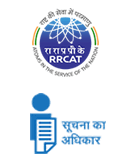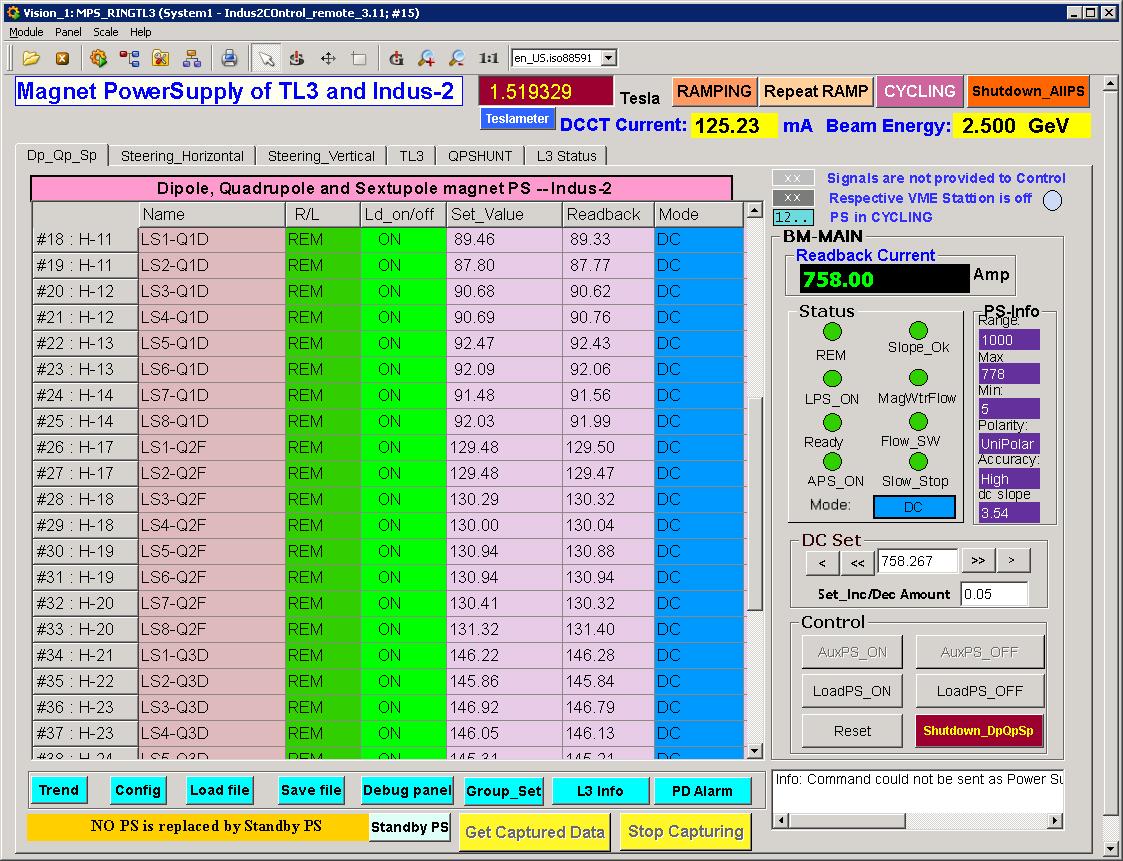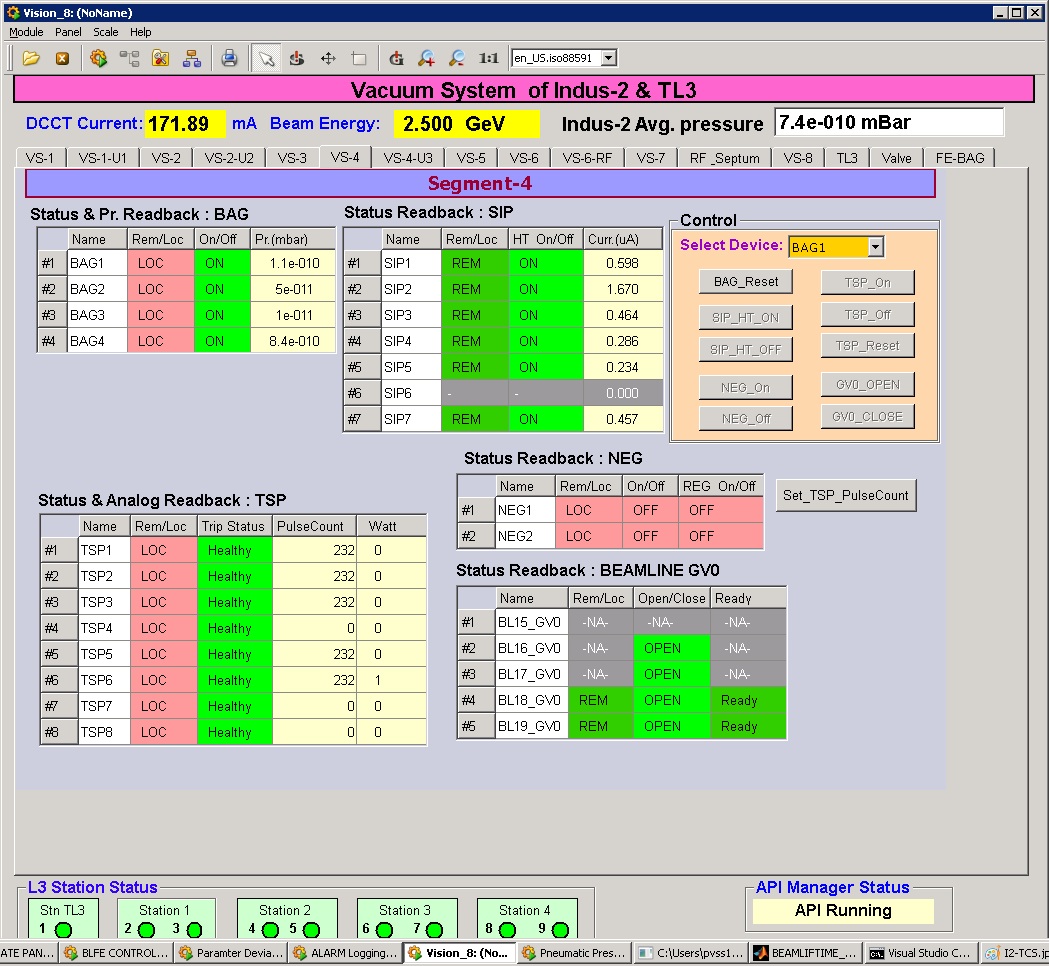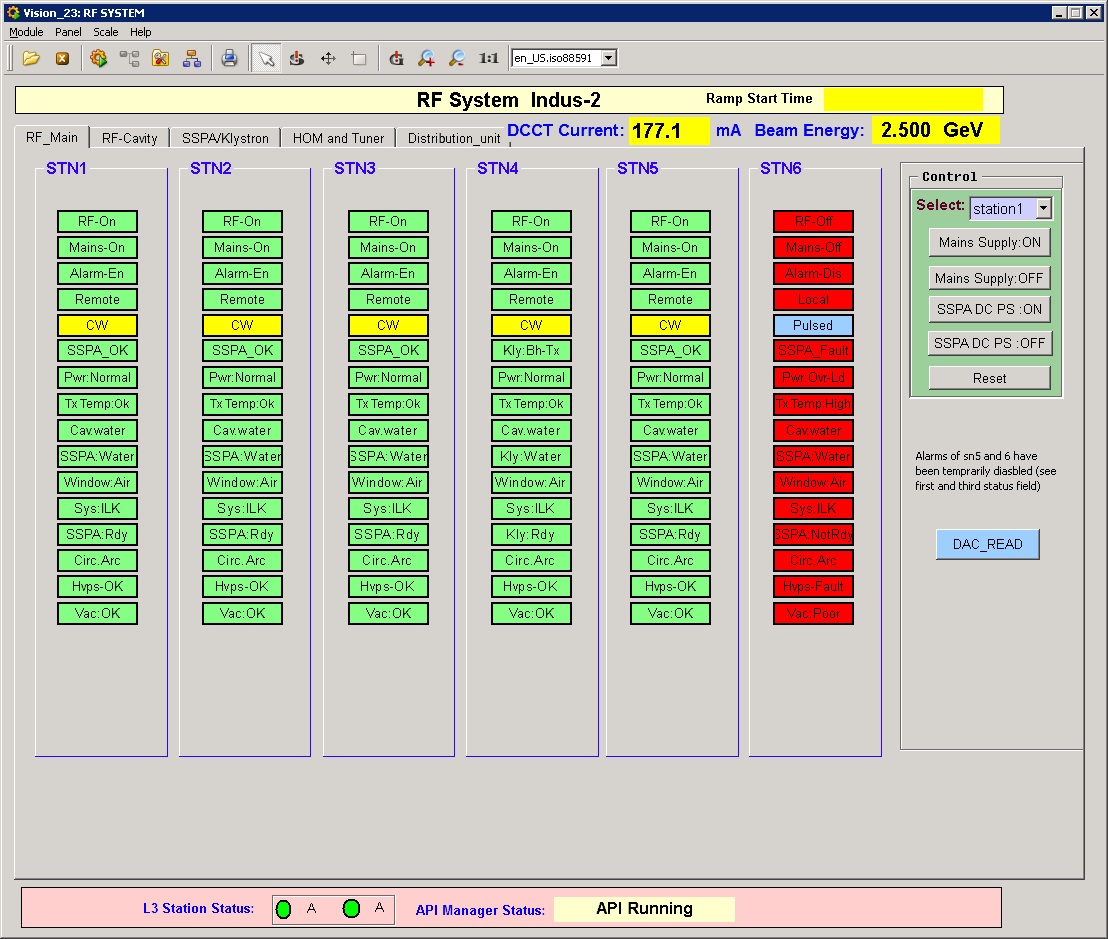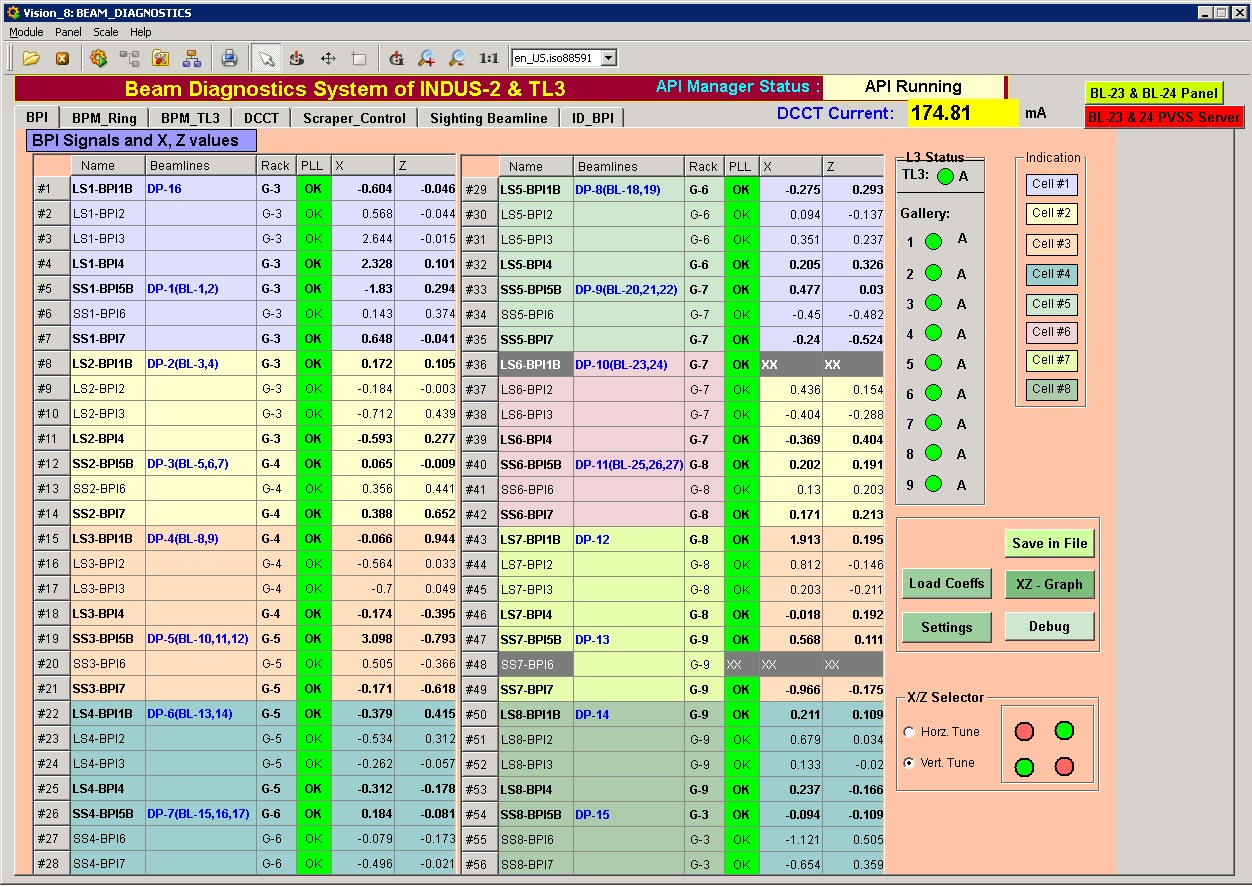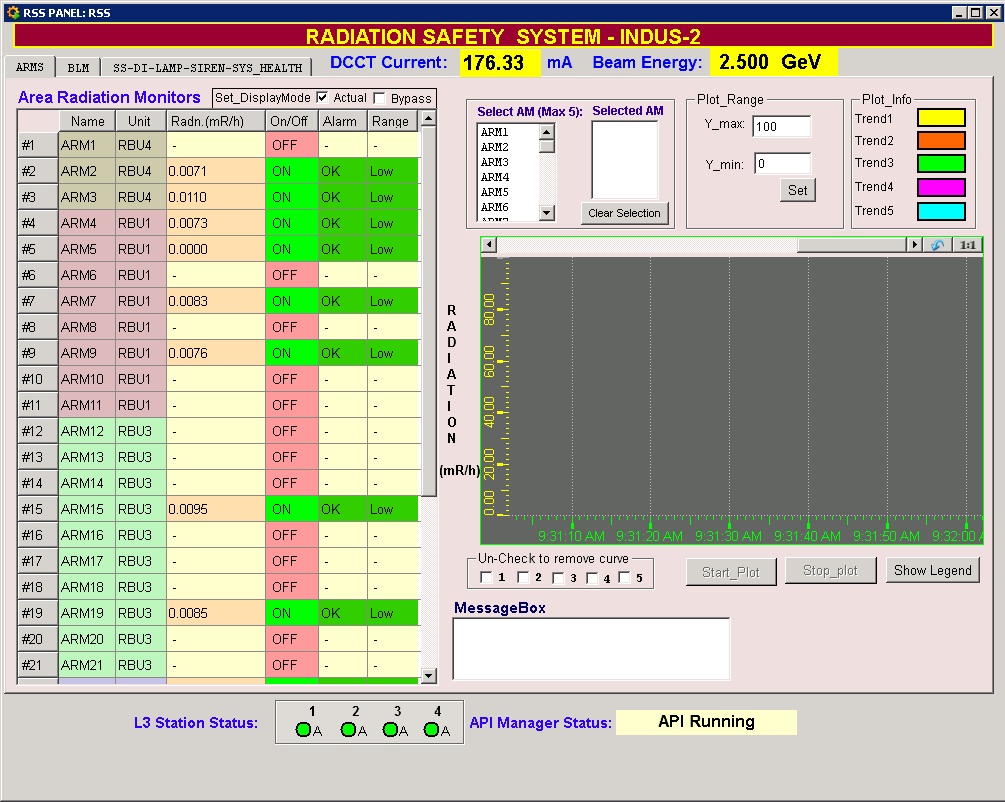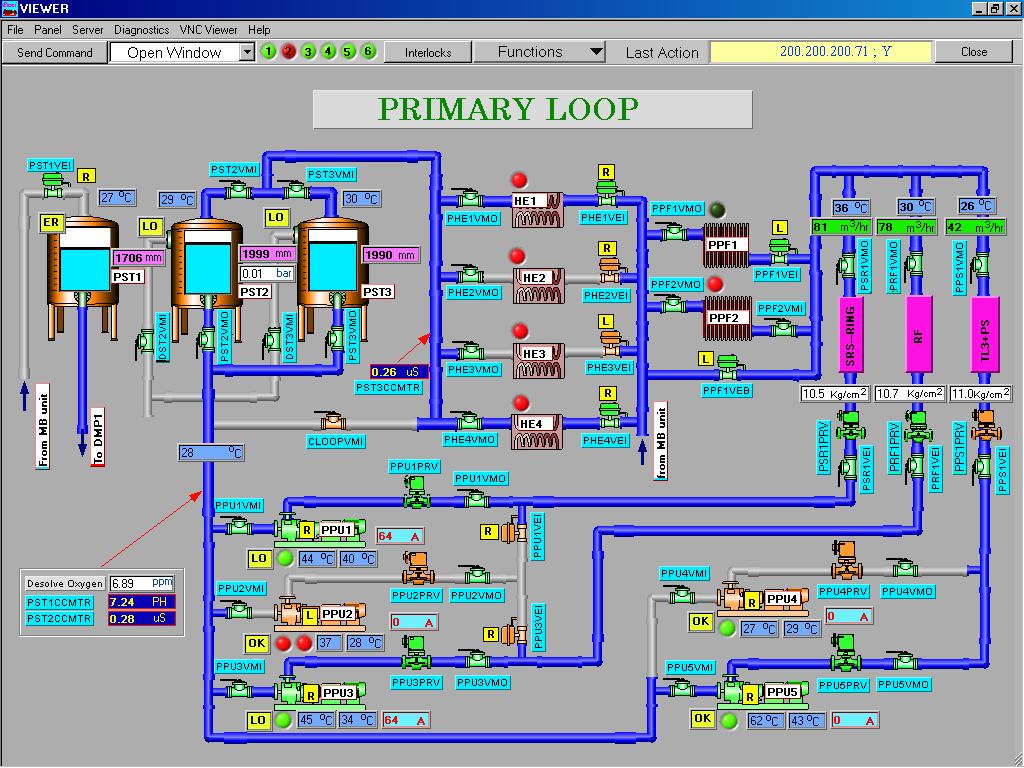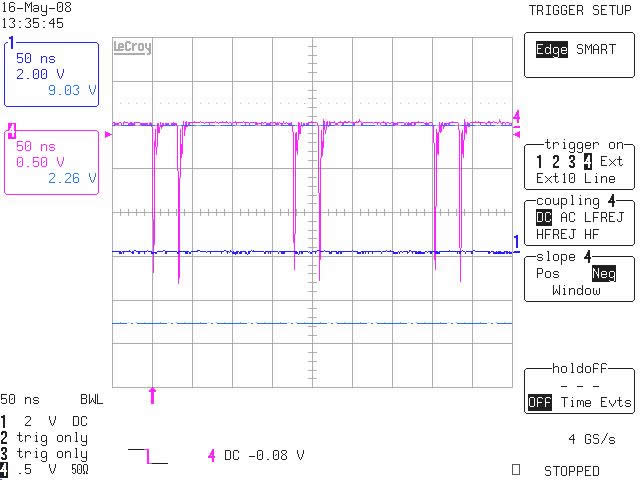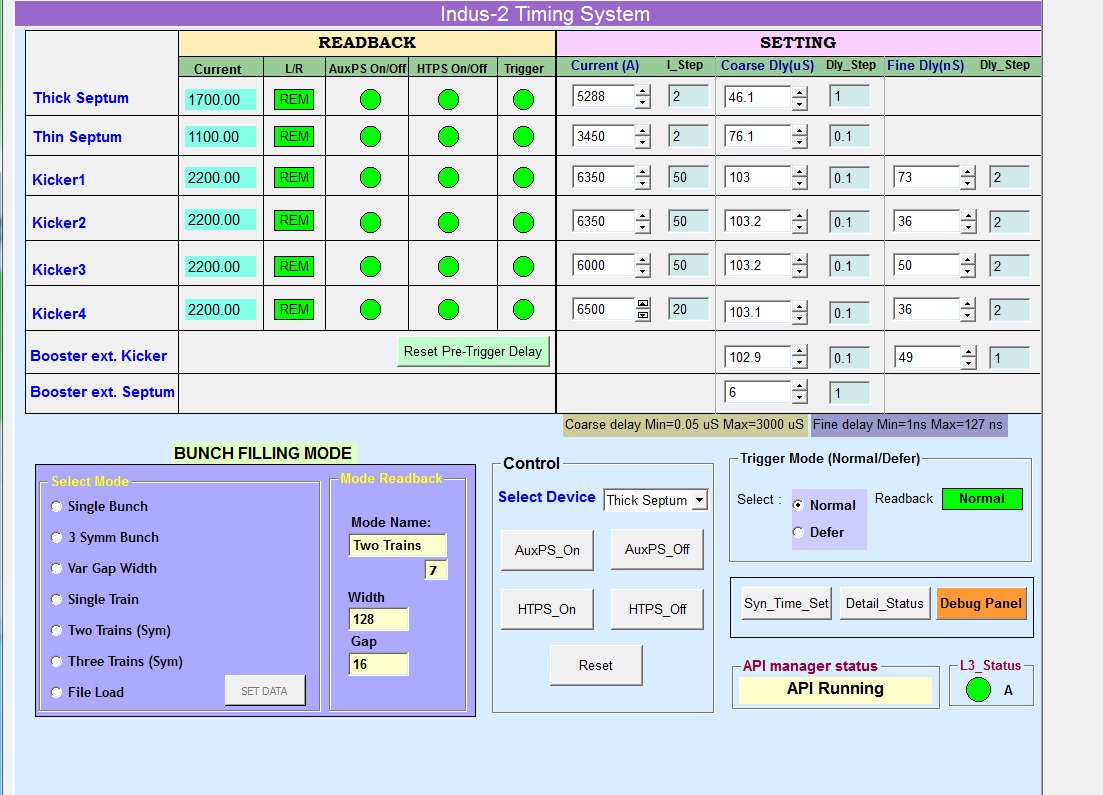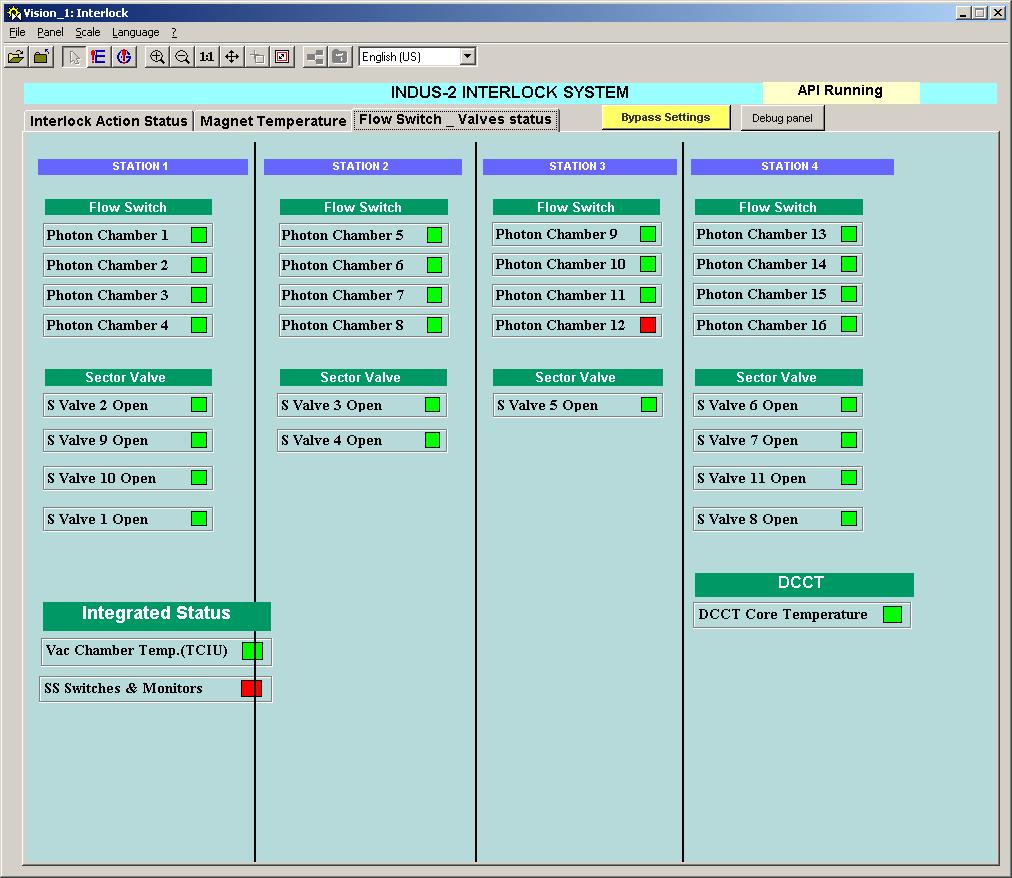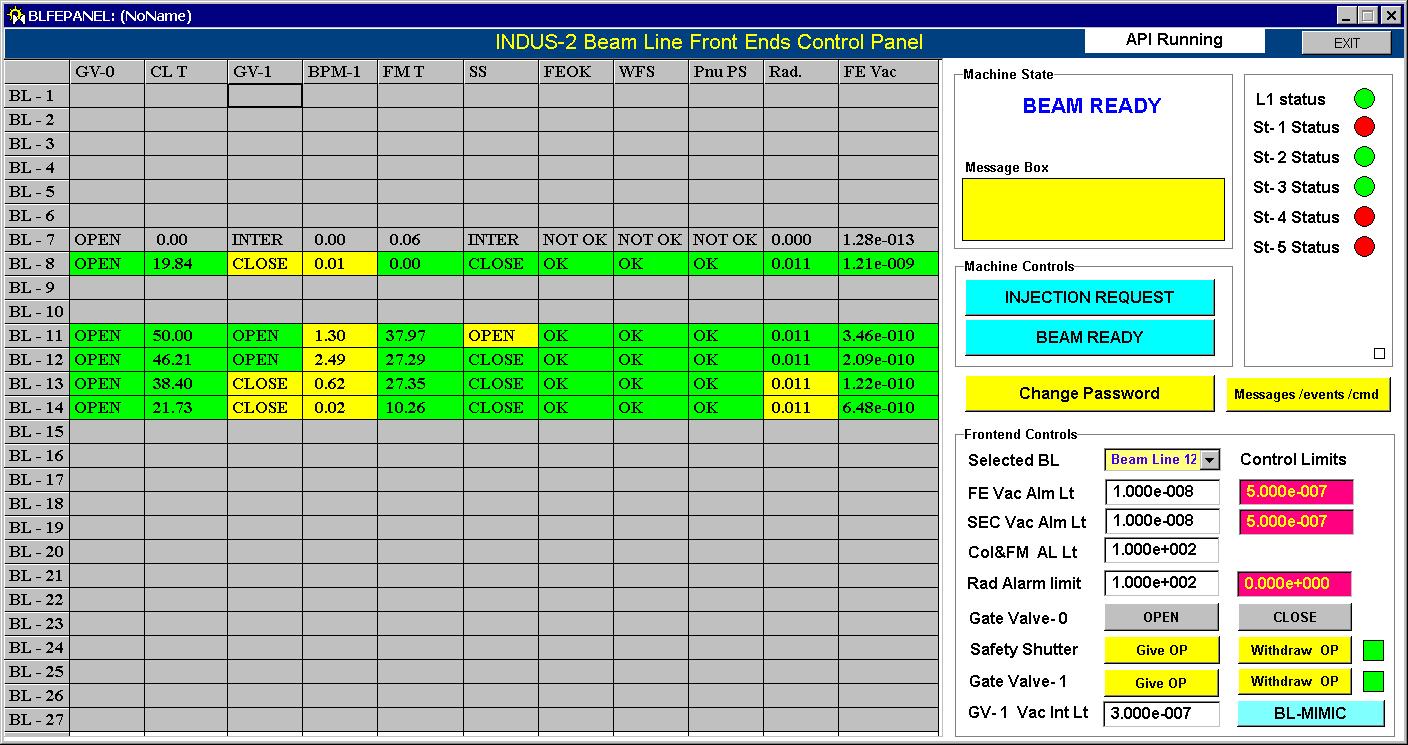| Accelerator Controls & Beam Diagnostics Division |
| Overview - Indus-2 Control System |
Any large facility like Indus-2 involves various sub-systems, which are quite extensive in them, all working closely together, towards achieving the desired goals and performance. The control system has the prime task of facilitating the monitoring, supervision and control of all the important parameters of the machine and various sub-systems. To achieve this, it has to interface and interact with various sub-systems at different levels of hardware and software.
The control system itself consists of various modules in hardware and software each performing a particular task. Indus-2 control system also consists of various modules or layers in hardware and software and also interconnection links. It follows a certain architecture that highlights the approach followed in designing the system. |
| |
| Design Philosphy - Indus-2 Control System |
The control system would be based on master slave architecture enabling functional and physical separation and placement of hardware and software modules across the entire gamut of control system components. Strong and fast network support is the backbone over which various hardware and software components would talk to each other in such a system. The system would generally allow the operation of any sub-system from any console in the main control room. It would be possible to control the entire machine from a minimum number of operator consoles. The system would be such as to minimize the cabling over long runs of cables for minimum interference possibility. The control room should see only essential communication and minimum instrument cables brought inside to reduce the cabling clutter and maintenance efforts. Operations would be achieved with software panels and switches as far as possible. Signals would be concentrated, multiplexed and preprocessed in the field as far as possible to achieve the above objective. Standard signal levels, connectors, control modes etc. would be used across all sub-systems as far as possible. |
| |
| Architecture - Indus-2 Control System |
Based on the above design philosophy, Indus-2 control system uses a modular and distributed architecture at various levels. The control system is divided into a number of intelligent subsystems each of which autonomously controls a specific subsystem such as magnet power supplies, RF, vacuum, Beam diagnostics, etc. Identical hardware and software modules are used to perform tasks of same nature.
The control system is distributed over three layers namely User Interface layer (UI), Supervisory Control layer (SC) and Equipment Control (EC) layer.
The upper layer known as User Interface Layer consists of computers for operator console, file servers, data base managers, alarm managers, consoles for software development, etc. These computers are connected over switched Ethernet LAN.
These computers possess high computing power and excellent graphics capability to provide good data presentation features. Each of the control room computers can access any of the computer connected to the higher-level network.
|
 |
| |
Figure: Indus-2 Architecture |
The computers designated as operator consoles allow the operator to run and supervise several control and monitoring processes simultaneously by means of windowing tools.
Two special computers function as file servers, one active and the other standby. There are independent computers working as data base servers to keep the log of the machine parameters and status. In addition, a number of computers are connected on the same network to display the status and other information as and when required.
The second layer is the Supervisory control layer that consists of Supervisory Controllers (SC) performing the task of supervisory control and data acquisition. These computers are responsible for the proper operation of a single subsystem. One SC is assigned to one subsystem. SCs receive commands and set values from the operator console over network. SC is connected downward to the EC layer by Fieldbus.
The third layer consists of Equipment Controllers (EC). These microprocessor-based intelligent units form the backbone of the control system. These ECs will be connected to SC, dedicated to a particular subsystem of the machine. All equipments in the field are interfaced to control system by ECs. Each EC controls and monitors the equipment it is interfaced with, according to the tasks assigned by the SC to which it is connected upwards. It continuously monitors the status of the equipment and reads various parameters for their current values and sends this information to concerned SC on request.
This distributed and modular architecture makes the system flexible to accommodate necessary upgradation that may be needed in future. The use of distributed, intelligent modules also helps to improve the overall system response. |
| User Interface Layer - Hardware - Indus-2 Control System |
Hardware at this layer consists operator consoles, intelligent terminals, application servers, file servers, database servers and computers for software development. High performances PCs are used at user interface layer. The servers provide services like auto backup, error logging, controlled access (user authentication) etc. These work in the redundant mode with capability of auto switching. Operator consoles provide excellent graphic environment for user interface development. |
| |
| Supervisory Control Layer - Hardware - Indus-2 Control System |
The second layer is the Supervisory Control (SC) layer or Layer-2 as shown in the block diagram above. The Supervisory Control (SC) layer or Layer-2 consists of Supervisory Controllers designed around industry proven VME bus architecture. These controllers are responsible for the proper operation of a single subsystem e.g., Magnet Power Supplies. There are other subsystems too like Vacuum, RF and Timing etc, which are controlled by dedicated SCs. These controllers work around MC68040 microprocessor based CPUs with on board Ethernet controller and are VME bus masters. Each VME bus crate at SC layer includes one or more field bus controllers as I/O boards. For some of the subsystems, these crates have dedicated I/O boards e.g. ramping clock generator board etc. The CPU receives commands and set values from the operator console over Ethernet network. It is connected downward to the Equipment Control layer (Layer-3) by Field bus (Profi Bus). Each SC may handle a number of ECs. All the software modules at Layer-2 run on OS9 platform. Main functions of Supervisory Controllers will be- |
- To acquire data from ECs (Layer-3), process the same and communicate the relevant data to control consoles at Layer-1.
- To receive the control messages from the operator console, parse the same and distribute these to related Equipment Controllers (at Layer-3).
- To carry out autonomous actions like checking the operations of subsystems that they control, and execute the close loop control wherever applicable.
|
| Equipment Control Layer - Hardware - Indus-2 Control System |
ECs are interfaced to various accelerator subsystems like power supplies, vacuum pumps, gauges and controllers, rf system equipments, safety and interlock systems etc. These are designed around VME bus modular architecture and consist of CPU board, Profibus controller board, VME power supply and individual equipment control modules. The details are shown in Figure 7.2. Each EC has MC68000 microprocessor based controller (CPU) sitting on the VME bus along with a Profi-bus controller and the required I/O boards (DAC, ADC and DI/O).
The Profi-bus controller in each of the ECs is connected to the field bus mastered by Profi-bus controller at Layer-2 in multi-drop fashion. Profi bus is a field bus, which in this particular case uses RS 485 as physical media and Profi protocols. The RS 485 link is powered by isolated power. Each EC controls and monitors the equipments it is interfaced with, according to the tasks assigned by the Supervisory Controllers to which it is connected upwards. All the software at this layer run over OS9 platform. ECs continuously monitor the status of the equipments, read various parameters for their current values, and send this information to concerned Supervisory Controller on request. The hardware and software is distributed in three layers each of which is having some intelligence.
There may be nearly 150 ECs all around the Indus-2 machine. Each EC may include some of the following types of VME boards:
|
- Controller board (based on 680x0 CPU)
- Communication Controller Board (Profi Controller)
- Interface module (ADC, DAC, Digital I/O)
- ADC board (12 bit, 16 bit)
- DAC board (16 bit, 18 bit)
- Digital Input boards (32 channel each)
- Relay Board
- Ramp board
- Timing Delay Generator Board
|
|


